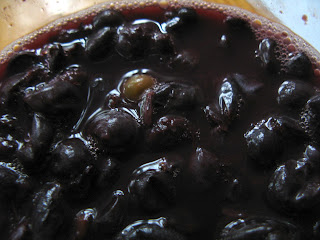 |
| Unidentified allotment vine - in the right place ? |
Reading an article in
Le Rouge et le Blanc on the Sablet and Séguret Côtes du Rhône Villages appellation today.
The article by Philippe Bouin and Yaïr Tabor mentions that some younger vineyard owners wonder whether it is useful for appellation rules to call for the use of 'improving grape varieties' (
cépages améliorateurs) in blends.
Many local regulations in southern France call for Syrah or Mourvèdre to form part of the blend in order to gain appellation status, whereas they might not give of their best in the area.
Everyone knows that the Northern Rhône is the spiritual and probably physical home of Syrah and that some of the wines produced there have gained mythical status. You would not plant Grenache here.
On the other hand the jammy grapes produced by Syrah in hot, very sunny areas of the lower Rhône valley serve only to gain the appellation badge, bringing nothing 'improving' to the party.
This leads me to reflect on the fact that there is indeed a 'right' place for certain grape varieties to grow.
In countries such as France with a long tradition of vine growing most of the 'right' places are known and have been for centuries. Generally speaking 'right' is a place where the grapes only just ripen fully, over a long season, every year.
French regulations by and large respect these traditions, but are applied a little too rigidly, ignoring or relegating to bit parts good indigenous grapes, which properly cultivated would produce great or at least very good wines (e.g. Pineau d'Aunis in the Loire; Cinsault and others in the south).
In countries like England regulations allow for much more flexibility, and the 'right' places are only starting to become known (e.g Darnibole at Camel Valley...).
There is much to look forward to as far as English wines are concerned.











